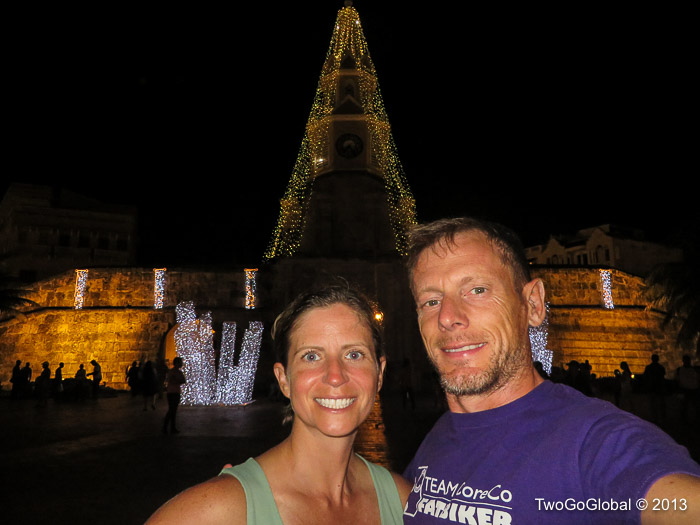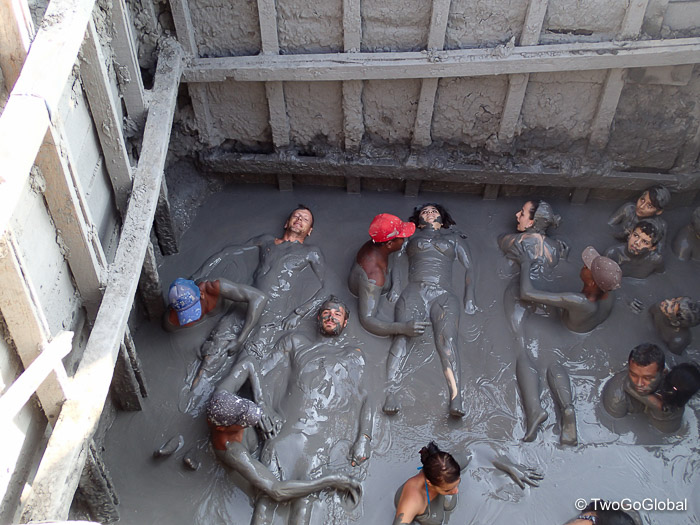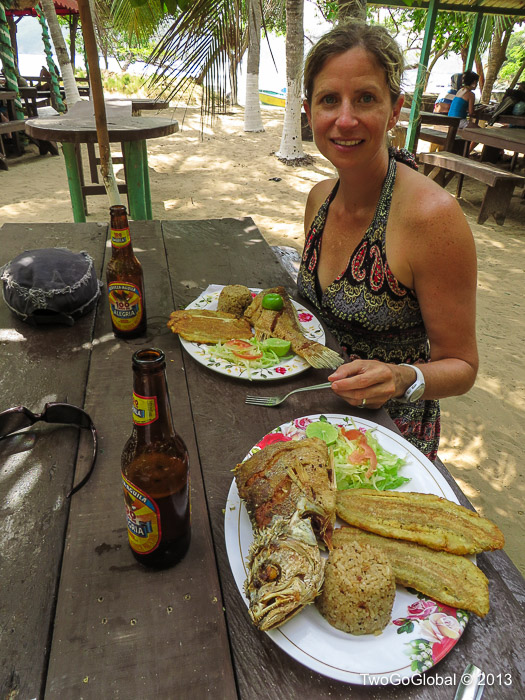Cartagena
With our arrival after dark we still had nowhere to stay, prompting a quick look at the budget accommodation in our Lonely Planet travel guide – the place we chose for two nights in the backpacker price-friendly location of Getsemani was fine, until we found out the deal two of our German sailing friends had made opposite to our place. At Casa San Roque, the room was better, the breakfast was adequate, all-day coffee was gratis and the price was almost half, just what we like!
Cartagena was first discovered in 1533 by the Spanish, and also attracted the attentions of the French and English who attempted to plunder the city on numerous occasions – the Spanish were having none of it and poured millions into the building of walls and forts, including Castillo San Felipe de Barajas, located on a hillside minutes from Getsemani.
Cartagena, within the walled city was very cruise ship touristy and around Getsemani very backpacker touristy. Both Andrea and I feel the need to move on fairly rapidly when we’re in the vicinity of too many other gringos so after four nights we had had our fill and decided it was time to head up the coast for a few days to the reputedly dodgy beach town of Taganga.
Taganga
Once upon a time a small and friendly fishing village and now a favorite haunt of backpackers and cheap dive qualifications. Its reputation since tourists moved in and hostel after hostel opened their doors has gone downhill, with robberies in the hills leading to the hostels and surrounding beaches supposedly very common. We didn’t let this bother us, nor did we have any need to venture into the hills, although we did end up leaving after only four of our planned seven day stay.
Our main reason to visit Taganga was to dive, and with over half a dozen companies to chose from we would have been spoilt for choice. We stayed in Tayrona dive centers accommodation, planned out all the diving, then never actually ventured underwater, mainly due to the cost and wanting to save funds to dive in the Galapagos Islands later in our trip. We did get to swim daily in the calm, although somewhat murky, waters of the bay so that was enjoyable.
December 9th – December 17th 2013























